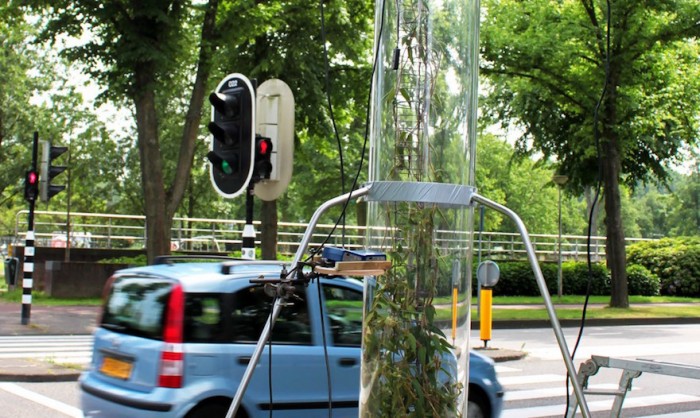
On a prominent street in Amsterdam, researchers are testing the impact of a specially modified honeysuckle plant on city pollution. The project called Green Junkie is a collaboration between urban-improvement group AMS Institute, MyEarth and the Wageningen University and Research Centre. The plants have been encased in protective tubes and installed in the city so that the researchers may observe how they perform outside of a lab environment.
Plants absorb carbon dioxide during the photosynthesis process, which accelerates their growth. According to NASA Earth Observatory’s feature on the carbon cycle’s effect on climate change, “plants on land have taken up approximately 25 percent of the carbon dioxide that humans have put into the atmosphere”.
To intensify the honeysuckle’s abilities to absorb carbon smog, the project’s scientists have found a way to increase the amount of hairs on the plant because the hairs are responsible for trapping and sucking up gaseous pollution from the air. MyEarth developed a special fertiliser from plant waste, which activates a gene in the honeysuckle that causes more hair to grow on its leaves. It also helps the plant grow faster and with larger leaves, giving Green Junkie the advantage of catching bigger and more particles of pollution.
The test will look at how much of a difference the plants will make on the quality of Amsterdam’s air. Should the impact be significant, the AMS Institute maintain that “this vegetation can become a practical instrument to improve the quality and liveability of the city.”






